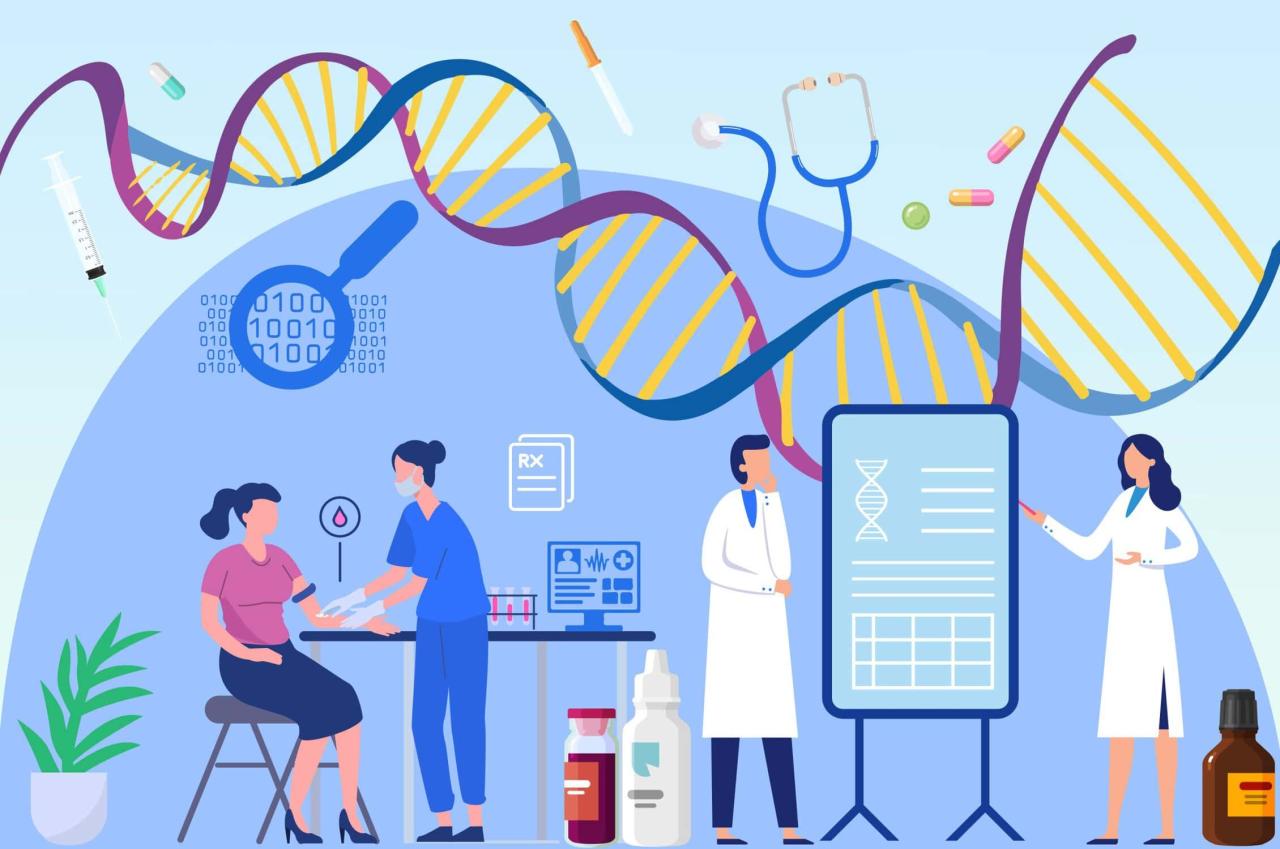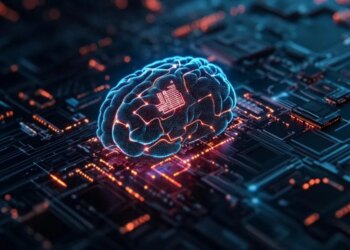In the long and storied history of medicine, a new and transformative era is dawning. For centuries, healthcare has operated on a “one-size-fits-all” model, where treatments were designed for the average person, often with varying degrees of success. Today, a new paradigm is emerging, one that leverages the power of data and technology to create a more precise and effective form of treatment: personalized medicine. This revolutionary approach tailors medical decisions, practices, and products to the individual patient, a task made possible by the unprecedented power of artificial intelligence (AI). This comprehensive article delves into the profound impact of AI in the era of personalized medicine, exploring the foundational technologies that make this a reality, the diverse applications that are already reshaping healthcare, and the immense opportunities and critical challenges that lie ahead as we build a more precise, predictive, and patient-centric healthcare system.
For decades, the promise of personalized medicine was limited by the sheer volume and complexity of biological data. The human genome, with its three billion base pairs, is a treasure trove of information, but analyzing it with traditional methods was a long and arduous process. The advent of AI has changed everything. By leveraging the power of machine learning, deep learning, and advanced analytics, AI can now sift through massive datasets of genomic information, electronic health records (EHRs), and clinical trial data in a fraction of the time it would take a human. It can identify subtle patterns, predict a patient’s response to a particular drug, and even discover new drug targets that were previously unknown. This is not just an efficiency boost; it is a fundamental shift in how we approach diagnosis, treatment, and prevention.
The global interest in AI-driven personalized medicine is skyrocketing, with massive investments from pharmaceutical companies, tech giants, and governments. The convergence of powerful new technologies—from next-generation genetic sequencing and sophisticated medical sensors to high-speed cloud computing—is making personalized medicine not just a possibility, but a necessity for a competitive and effective healthcare system. From an AI that can analyze a person’s DNA to recommend a targeted cancer treatment to an AI that can monitor a patient’s vitals in real-time to predict a heart attack, the applications are as diverse as they are profound. This is more than a technological shift; it is a profound societal one, where we are beginning to redefine our relationship with our own health by creating a more proactive, predictive, and patient-centric system. The AI-driven era of personalized medicine is here, and it promises to be one of the most impactful and transformative technological shifts of the 21st century.
The Pillars Power Personalized Medicine

The power of personalized medicine is not a single piece of technology but a sophisticated and integrated ecosystem that is built on several foundational pillars.
A. Genomic Sequencing and Big Data Analytics
The first and most critical step in personalized medicine is understanding a person’s unique genetic makeup. Genomic sequencing, the process of determining the complete DNA sequence of an organism’s genome, has become incredibly fast and affordable. This has created a massive flood of genetic data, a dataset so vast that it is impossible for a human to analyze. This is where big data analytics comes in. AI and machine learning algorithms can sift through this genomic data to identify genetic markers that are associated with a particular disease or a specific response to a drug. This allows doctors to make a diagnosis with a level of precision that was once impossible and to recommend a treatment that is tailored to a person’s unique genetic makeup.
B. Artificial Intelligence (AI) and Machine Learning
The true engine of personalized medicine is artificial intelligence (AI) and machine learning. AI algorithms can analyze a wide range of data, from a patient’s genetic information and their electronic health records to the results of their clinical tests and even their lifestyle data from a wearable health device. By analyzing these diverse and complex datasets, the AI can:
- Predict disease risk: The AI can identify subtle patterns in a person’s genetic and lifestyle data to predict their risk for developing certain diseases, allowing for a more proactive approach to prevention.
- Optimize drug discovery: The development of a new drug is a long and expensive process. AI can accelerate this by analyzing millions of chemical compounds and protein structures to identify new drug targets and predict which compounds are most likely to be effective.
- Personalize treatment plans: By analyzing a person’s genetic data, the AI can predict how they will respond to a particular drug, helping a doctor to choose a treatment that has the highest chance of success and the lowest chance of side effects. This is a shift from a “trial and error” approach to a more precise and data-driven one.
C. The Internet of Medical Things (IoMT) and Continuous Monitoring
Personalized medicine is not just about a single point in time; it is about continuous monitoring. This is where the Internet of Medical Things (IoMT) plays a crucial role. This is a vast network of medical devices, from smartwatches that track a person’s heart rate and sleep cycles to smart implants that can monitor a person’s blood sugar or blood pressure in real-time. This continuous stream of data, when combined with a person’s genomic and health record data, provides a living, breathing picture of their health. AI can then analyze this data to provide a continuous and personalized health assessment, and to alert a doctor to a potential problem before it becomes a crisis.
D. Electronic Health Records (EHRs) and Data Integration
The power of personalized medicine is dependent on the ability to integrate a wide range of data from a patient’s life. Electronic Health Records (EHRs), which are a digital version of a patient’s paper chart, are a critical part of this ecosystem. However, for personalized medicine to be effective, this data must be integrated with a patient’s genomic data, their lifestyle data from wearables, and the results of their clinical tests. The challenge of data integration and interoperability is a major hurdle that must be overcome to create a single, unified, and comprehensive picture of a person’s health.
Applications Across a Wide Range of Medical Fields

The benefits of AI-driven personalized medicine are not limited to a single medical field; they are being applied to a diverse array of disciplines, creating new efficiencies and opportunities.
A. Oncology and Targeted Cancer Treatments
In oncology, personalized medicine is a game-changer. Doctors can now analyze the genetic makeup of a person’s tumor to identify the specific genetic mutations that are driving the cancer. AI can then use this data to recommend a targeted therapy that is designed to attack those specific mutations, rather than a broad-spectrum chemotherapy that harms healthy cells as well. This leads to more effective treatments, fewer side effects, and a better quality of life for the patient. This is a shift from treating “cancer” to treating a person’s “specific cancer.”
B. Proactive Disease Prevention and Diagnosis
AI-driven personalized medicine is moving us from a reactive to a proactive approach to disease prevention. By analyzing a person’s genomic and lifestyle data, an AI can predict their risk for a wide range of diseases, from cardiovascular problems to Alzheimer’s. This allows a doctor to recommend personalized lifestyle changes and preventive measures that can help to delay or even prevent the onset of a disease. This is a shift from waiting for a disease to develop to actively preventing it.
C. Mental Health and Neurological Disorders
In mental health, AI is being used to analyze a person’s brain activity, sleep patterns, and even their language to diagnose conditions like depression and anxiety with greater accuracy. This can lead to a more precise and personalized treatment plan, with a doctor recommending a specific therapy or a medication that is most likely to be effective for that individual. In neurological disorders, such as Parkinson’s and Alzheimer’s, AI can analyze a person’s genetic and health data to predict their risk and to develop new, targeted treatments that can slow the progression of the disease.
D. Infectious Diseases and Vaccine Development
The speed of AI-driven personalized medicine was on full display during the COVID-19 pandemic. AI was used to analyze the virus’s genetic sequence to help scientists to design new mRNA vaccines in a fraction of the time it would have taken with traditional methods. In the future, this same technology can be used to monitor a person’s immune response to a vaccine or a disease, and to design new vaccines that are more effective for a person’s specific genetic makeup. This is a crucial step toward a world where we can respond to a new pandemic with a speed and precision that was once unimaginable.
Challenges and the Future of Personalized Medicine
Despite the immense promise of personalized medicine, its development is not without significant challenges that must be addressed.
A. Privacy, Data Security, and Ethical Concerns
The vast amount of sensitive data that personalized medicine collects—from a person’s genetic information to their daily health vitals—raises major concerns about privacy and data security. A breach of this data could be catastrophic, leading to everything from genetic discrimination to a loss of autonomy. The development of robust security protocols, strong data encryption, and a clear regulatory framework will be crucial to building a personalized medicine system that its users can trust. The ethical debate over who owns this data and how it can be used is a central and ongoing discussion.
B. The Digital Divide and Health Equity
The benefits of personalized medicine are often dependent on access to technology and high-speed internet. This could create or exacerbate a digital divide, where some people have access to the benefits of personalized medicine while others are left behind. The high cost of genetic sequencing and advanced treatments can also create a new form of health inequality. Ensuring that personalized medicine is affordable and accessible to a global audience is a major ethical responsibility that requires new government subsidies and public-private partnerships.
C. Regulatory Hurdles and Standardization
The pace of AI-driven personalized medicine is currently outpacing the ability of governments to regulate it. New drugs and treatments that are developed with AI and genetic engineering will require a new regulatory framework for approval. The data that is being collected from a wide range of devices will need to be standardized to ensure interoperability and to allow for a single, unified view of a person’s health. The lack of universal standards can create a fragmented system where different devices and platforms cannot communicate with each other, limiting the potential of the technology.
D. Physician Training and Patient Education
The traditional medical curriculum is not designed for a world of AI-driven personalized medicine. Doctors of the future will need to be proficient in data analytics, genetics, and a new kind of “health coaching” that helps patients to understand and act on their personalized health data. The challenge of physician training is a major hurdle that must be overcome through new educational programs and a focus on continuous learning. Furthermore, patients will need to be educated on the benefits and risks of personalized medicine to make informed decisions about their own health.
Conclusion
In conclusion, the AI-driven era of personalized medicine is a transformative force that is fundamentally reshaping our approach to health and wellness. By leveraging the power of data and technology, we are moving beyond a “one-size-fits-all” model of medicine and into a new era of precision, prediction, and personalization. The foundational pillars of this revolution—the data-generating power of genomic sequencing, the intelligence of AI and machine learning, and the continuous monitoring of the Internet of Medical Things—are all working in synergy to create a new way of living and working. The applications of this technology are incredibly diverse and profound, promising to revolutionize everything from cancer treatment and disease prevention to mental health and infectious diseases.
The promise of personalized medicine is immense. It offers a solution to some of the most pressing challenges of our time, from the high cost of healthcare and the ineffectiveness of traditional treatments to the global threat of new pandemics. It holds the potential to create a future where our health is not a matter of chance, but a matter of choice. This is not just a technological upgrade; it is a blueprint for a better and more equitable future, one where we can use the power of the digital world to understand, manage, and improve the health of every individual.
However, as we embrace this new era, we must also be mindful of the immense challenges that lie ahead. The issues of privacy, data security, and health equity are not footnotes; they are central to the responsible development of personalized medicine. We must navigate this path with a new ethical framework, one that ensures that this powerful technology is used to empower humanity, not to control or exploit it. The AI-driven era of personalized medicine is a journey that will be defined not just by what we can do with data, but by what we do with the insights we gain. The future is a reflection of the choices we make today, and the most exciting part of this journey is that we are all a part of it.





